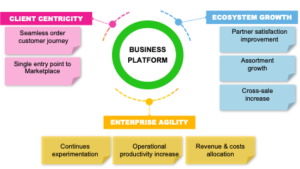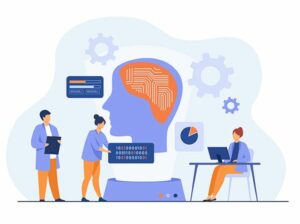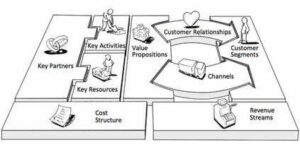
In the rush to enrich customer data and display digital advertisements in a “privacy-sensitive fashion,” the ad industry has adopted data clean room (DCR) technology as the best path forward. There are clear benefits to rapid industry adoption – namely, increasing recognition in the industry of the need to adopt new technology that protects consumer privacy. DCRs are very helpful, and the rapid adoption of clean rooms is a clear step in the right direction.
However, DCRs can’t solve every single one of a brand’s data needs by themselves. There are complementary technologies that are getting swept aside, and brands need to know about these solutions too.
ID graphs, enclaves, and encryption technology all provide worthwhile functions that can be used independently or alongside clean rooms. For advertisers to actually get ready for a new era of customer data, the industry needs to embrace a wider “data collaboration” category that better encapsulates greater needs and capabilities than what clean rooms can provide on their own.
Assessing Marketer Needs
To understand why a broader data collaboration category matters so much, it helps to understand what marketers actually need right now. For most marketers, looming cookie deprecation will have a huge impact on their strategies, especially on how they gather, analyze, share, and activate marketing data.
Clean rooms have soared in popularity because they can help with some of these goals. Clean rooms streamline the process of obfuscating, matching, and exporting data to be used in campaigns. That’s a great tool, but some marketers need to do more with their first-party data to activate in a world without cookies. Other marketers don’t need clean room functionality but need something else entirely. Therefore, it behooves brands – and the industry at large – to better understand the options in a wider category.
Building a Bigger Category
Clean rooms can do their job of matching data very well, but many marketers’ data strategies need a broader range of capabilities. Therefore, they likely need more data collaboration tools. At a minimum, the wider category should include all of these tools.
Data clean rooms: At their most basic, clean rooms are secure environments where sensitive data from different sources is aggregated and analyzed. The technology allows collaboration and insights while protecting individual identities by obfuscating the original data. This approach is useful when privacy regulations or commercial concerns limit direct data sharing.
Identity graphs: An identity graph, or ID graph, is a centralized database that connects various pieces of information about individuals or entities from different sources. It creates a unified view by linking identifiers like email addresses, social media handles, and cookies. This helps organizations understand customer behaviors and preferences across different channels, enabling personalized experiences and targeted marketing.
Enclaves: In confidential computing, an enclave is a secure and isolated section of a computer’s memory that safeguards sensitive data and computations from unauthorized access. It provides a trusted environment for processing confidential information, much like a clean room. The key difference is that enclaves use hardware-based security features to encrypt and isolate data from the rest of the system, while clean rooms utilize the cloud. The enclave approach enables secure computations in scenarios where data privacy is crucial, even on potentially untrusted hardware or environments.
Encryption technology: Encryption technology involves converting data into a coded or unreadable form using algorithms and keys. Encryption safeguards sensitive information during storage and transmission by making it inaccessible to unauthorized individuals. Its use cases extend more widely across various applications, including secure communication (such as encrypted messaging), data protection (for sensitive files and databases), online transactions (to safeguard financial information), and cybersecurity (to prevent data breaches).
Moving Forward with More Understanding
The advertising industry’s current focus on clean rooms is certainly a positive step. If nothing else, advertisers are finally paying more attention to the tools available to meet their privacy and data collaboration needs.
However, for the industry to truly advance and build a privacy-safe ecosystem, we need to widen the lens and focus on the wider category of data collaboration, rather than just a single tool. The more that advertisers are aware of different ways to encrypt their data, collaborate with partners, and comply with laws and regulations, the easier things will be for them. This will trickle down to consumers, who can feel a sense of security when it comes to their data and privacy.
- SEO Powered Content & PR Distribution. Get Amplified Today.
- PlatoData.Network Vertical Generative Ai. Empower Yourself. Access Here.
- PlatoAiStream. Web3 Intelligence. Knowledge Amplified. Access Here.
- PlatoESG. Carbon, CleanTech, Energy, Environment, Solar, Waste Management. Access Here.
- PlatoHealth. Biotech and Clinical Trials Intelligence. Access Here.
- Source: https://www.dataversity.net/its-not-all-clean-rooms-pushing-for-a-wider-data-collaboration-category/
- :has
- :is
- :not
- :where
- a
- About
- access
- across
- actually
- Ad
- addresses
- adopt
- adopted
- Adoption
- advance
- advertisers
- Advertising
- algorithms
- All
- allows
- alongside
- an
- analyze
- analyzed
- and
- applications
- approach
- ARE
- AS
- aside
- At
- attention
- available
- aware
- basic
- BE
- because
- benefits
- BEST
- Better
- bigger
- brands
- breaches
- broader
- build
- but
- by
- Campaigns
- CAN
- capabilities
- cases
- Category
- centralized
- certainly
- channels
- clear
- Cloud
- coded
- collaborate
- collaboration
- comes
- commercial
- Communication
- complementary
- comply
- computations
- computing
- Concerns
- connects
- consumer
- consumer privacy
- Consumers
- converting
- cookie
- cookies
- creates
- crucial
- Current
- customer
- customer data
- Cybersecurity
- data
- Data Breaches
- data privacy
- data protection
- data sharing
- Database
- databases
- DATAVERSITY
- DCR
- difference
- different
- digital
- direct
- direction
- Display
- do
- Dont
- down
- during
- easier
- ecosystem
- else
- embrace
- enables
- enabling
- encapsulates
- enclave
- encrypted
- encrypted messaging
- encryption
- enrich
- entirely
- entities
- Environment
- environments
- Era
- especially
- Even
- Every
- Experiences
- extend
- Fashion
- Features
- feel
- Files
- Finally
- financial
- financial information
- Focus
- For
- form
- Forward
- from
- functionality
- functions
- gather
- get
- getting
- Goals
- graph
- graphs
- great
- Handles
- Hardware
- Have
- help
- helpful
- helps
- How
- HTTPS
- huge
- ID
- identifiers
- identities
- Identity
- if
- Impact
- in
- inaccessible
- include
- Including
- increasing
- independently
- individual
- individuals
- industry
- industry’s
- information
- insights
- into
- involves
- isolated
- IT
- ITS
- Job
- jpg
- just
- Key
- keys
- Know
- large
- Laws
- Laws and regulations
- Lens
- like
- likely
- LIMIT
- linking
- looming
- Making
- many
- marketers
- Marketing
- matching
- Matters
- Media
- Meet
- Memory
- messaging
- minimum
- more
- most
- much
- namely
- Need
- needs
- New
- nothing
- now
- of
- on
- ONE
- online
- Options
- or
- organizations
- original
- Other
- own
- partners
- path
- paying
- Personalized
- pieces
- plato
- Plato Data Intelligence
- PlatoData
- popularity
- positive
- potentially
- preferences
- prevent
- privacy
- process
- processing
- protecting
- protection
- provide
- provides
- Pushing
- range
- rapid
- rather
- ready
- recognition
- regulations
- REST
- right
- Room
- Rooms
- rush
- safeguards
- scenarios
- Section
- secure
- security
- sense
- sensitive
- Share
- sharing
- should
- single
- So
- soared
- Social
- social media
- Solutions
- SOLVE
- some
- something
- Sources
- Step
- storage
- strategies
- streamline
- such
- system
- targeted
- Technologies
- Technology
- than
- that
- The
- their
- Them
- themselves
- There.
- therefore
- These
- they
- things
- this
- to
- too
- tool
- tools
- Transactions
- truly
- trusted
- unauthorized
- understand
- unified
- use
- used
- using
- utilize
- various
- very
- View
- ways
- we
- WELL
- What
- when
- while
- WHO
- why
- widely
- wider
- will
- with
- without
- world
- worthwhile
- zephyrnet












